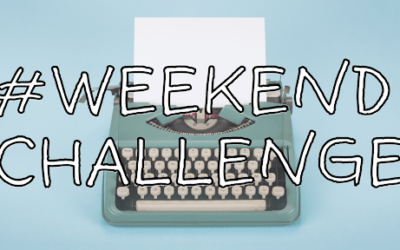
How to Describe your Characters
Character description can be a challenge. How much information is too much? Which parts are your readers even interested in? How do you describe your character without falling into age-old clichè territory? Let’s have a look! In this article we will cover:-
- How to describe a character in an engaging way
- What is needed when you introduce a new character (and what isn’t!)
- How to describe your protagonist in a first-person narrative (without clichè!)
- Pacing, pacing, pacing
- How to make your reader care about your characters using description
Describing your characters:
What does your reader need to know?
When we think of describing our characters, we often think about hair colour, eye colour, or maybe the clothes they’re wearing. However that information might not be needed straight away, or at all.
Trying to visualise a character from a list of static descriptions is boring and hard work for the reader. In fact, if you don’t give them a reason to invest in a character — by making sure the descriptions are vivid, or tie into the story — then they might skim-read over, or give up entirely.
Adding in descriptions with movement (or action) can help, and slowly trickling information into your story, rather than all in one chunk, is also a good idea.
What we should consider when writing about characters — or about anything, really — is this: What does the reader need to know right now?
Important Questions
Other questions to consider: What is the essence of this character? What does the reader need to know about them to progress the story? And finally, how can we convey the important information in an interesting way, without slowing down the pace of the story?
For instance, which of these following paragraphs tells you, the reader, more about the character? Which one is more engaging to read?
Example 1
Lizzi burst through the door. She had brown frizzy hair and blue eyes. Her thin lips and high cheekbones made her look angry sometimes, but she wasn’t an angry person at all. Lizzi loved the outdoors, had done ever since she was little. She was always out there somewhere, ankle-deep in mud. She wore hiking boots and a thick coat. “Let’s get out of here,” she said, grinning.
Example 2
Lizzi burst through the door, wild wind still in her curly hair, her well-worn boots muddy as usual. “Let’s get out of here,” she said, grinning, her eyes bright with adventure. Her cheeks were pink from the outdoors, her limbs wound tight, desperate to head out into the wilderness again.

Let’s take a look at these examples more closely…
Both paragraphs describe Lizzi and tell you that she loves the outdoors. This is the key bit of information the reader needs to know. However, the first example tells you, and the second example shows you. The first example is slow paced, and the second example is faster paced.
The second example achieves its goal with fewer words.
Can you feel the difference in perspective too, as a reader? The first example keeps you at arm’s length. Aside from the first and last sentence, it’s all in the past. Information is being told to you, and you’re not being allowed to figure it out for yourself. Most of the first example isn’t in the present, where the story is actually taking place.
The second example is nose-to-nose with the action. As a reader, you feel like you’re in the scene, in the middle of the action. You’re experiencing the scene, being giving interesting bits of information about Lizzi that answer some of your questions, but leave more dangling. You’re not just being told everything right up front.
What is the essence of your character, and how can you show the reader this, rather than just tell them about it?
Character Description tips
- What important information does the reader need to know about the character RIGHT NOW? If anything can be saved for later, then save it for later. Questions are good. Intrigue is good. Keeping the pace is good.
- Is what they look like actually important to the story? If it isn’t overly important, you can be more brief with character description.
- How can you convey the character’s personality through the description? Think action, body language, decisions, dialogue.
- Never just list a bunch of attributes. This is fatiguing, and not really helpful for the reader if these physical descriptions don’t actually relate to the story.
Character Description:
How to describe your viewpoint character
This is a fun problem all writers will stumble with from time to time. If your story is in first person, how do you show the reader what your character looks like without (cliché alert!!) resorting to the character looking in the mirror?
It is tricky. Unlike some secondary or tertiary characters, you usually want the reader to be able to vividly imagine your main character. But you have to do this cleverly. Here are some examples that are better than having your character simply describe themselves… because how often do we, as real humans, randomly start thinking about our looks in the monologue inside our head?
Character Description:
Comparison & Dialogue
Comparison. Comparison is your friend. Does your protagonist have black hair like his father? A crooked smile like his uncle? Is he shorter than the coolest kid in school?
Humans compare themselves to others all the time. This can be a great way to get across description without is being obvious.
Dialogue. The way your character is seen by others is perhaps the most valuable resource you have. How someone is treated, talked about, reacted to, can give you a wealth of knowledge without you ever having to describe anything.
For example, if your character stood up and talked in class, how would the other kids react? Would they listen? Would they laugh? Would they ignore him? Would they hang on his every word?
You can learn so much from the surrounding characters. This goes for everything in your story, not just how your character looks. Are they brave? Cruel? Kind? You’ll see all the traits they possess reflected back from supporting characters so use that to your advantage.
Description within the Action
This one is tricky, but it can work. Say your character sees a photo of himself in a newspaper. You could slip in a bit of description there without it sounding too forced. Often it’s how the description is written that can make or break it. For example:-
Example 1
I look down at my own face in the newspaper. My hair is black and short. My eyes are blue. I’m trying to smile but I’m too conscious of the cameras being shoved into my face. It isn’t the best photo of me, especially when I’m the shortest boy in the photo, and clearly uncomfortable, but I guess I’m not that photogenic anyway.
Vs.
Example 2
I look down at my own face in the newspaper. My dark hair is all over the place — but that isn’t anything new. I actually think I look OK, but then I see Billy standing beside me, all tall and proud and grinning, like standing in front of a row of cameras is the easiest thing in the world to him. I look like I’m about ready to crawl out of my own skin and flee the scene. I turn the page so I don’t have to look anymore.
Both examples describe the character (black hair and short) and tell the reader that the protagonist is quite shy. Which example does this the most effectively?
It takes just a few small adjustments to make description more engaging for your reader. Always be considerate of their attention span, as today there are a million and one things trying to pull them away from our stories.

Character Description Conclusion
Practice getting to the heart of your characters. Practice sharing only what is needed, and above all else, respect your reader’s intelligence. “Well-worn muddy boots” is more than enough information for the reader to understand that Lizzi is always outdoors. Seeing our second protagonist standing next to Billy, who is comparitively confident and happy, is enough to tell the reader that our hero is shy. You don’t need to spell everything out for your reader. Figuring things out along the way is much more fun.
How much description is too much?
This is more down to personal style. Some readers love learning every last inch of their characters, to help them visualise the story. Some readers are happy to have a few things to go on and fill in the blanks themselves.
Regardless of how much detail you as a writer want to include, always keep what we’ve discussed so far in mind. Never sacrifice the pace of your story for information that isn’t entirely essential to the reader, and even then, try to seed it in as painlessly as possible.
We hope you found these backstory tips helpful! Make sure to join in the community over on Facebook and Twitter!
Read our Latest Articles for Writers
The Writer’s Guide to Social Media
Today we are talking about a topic that intimidates many writers and illustrators, social media. Good news! It doesn’t have to. The key is to choose the platform that is most enjoyable to you. The one you don’t mind spending time on and fosters authentic...
How to Win a #WeekendChallenge
Thank goodness it’s Friday, WA Community, and not just because it’s the start of the weekend. Friday’s have us happy dancing because that’s when we announce the new #WeekendChallenge prompt. The #WeekendChallenge is an opportunity to write a 100-word entry based on a...
Submitting Your Story: 7 Tips to Survive the Query Trenches
You’ve typed “the end”, received feedback, and revised your story. Congratulations, you are ready to enter the Query trenches! Whether you decide to query an agent or an editor is a personal preference but these seven survival tips will apply to both query routes....
Subscribe to our mailing list
Be the first to find our about our newest blogs, offers and news from Write Academy!






